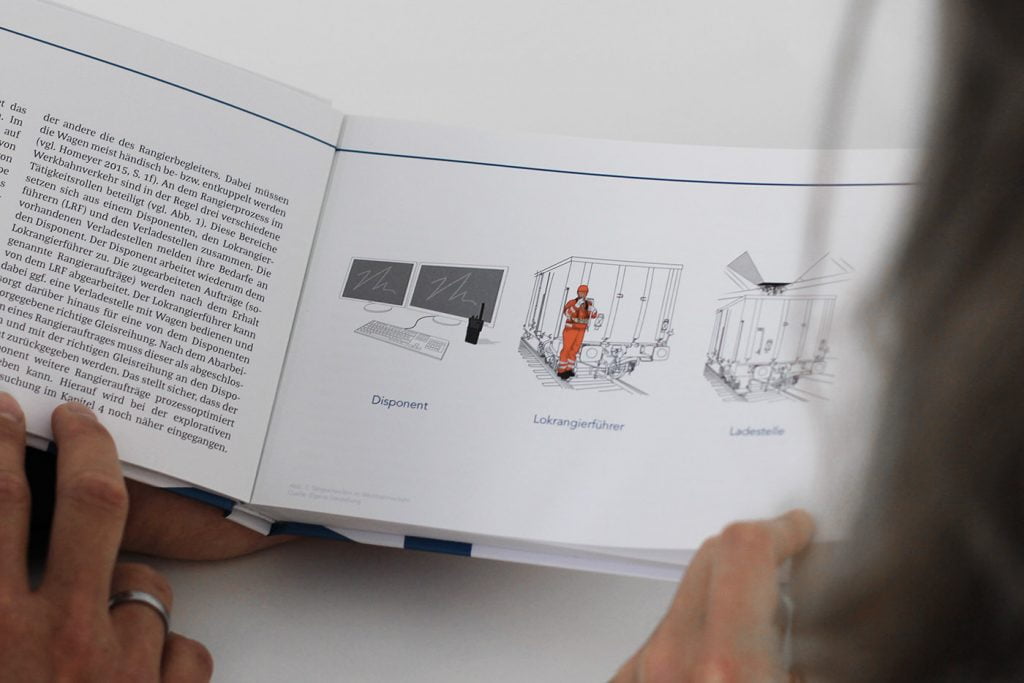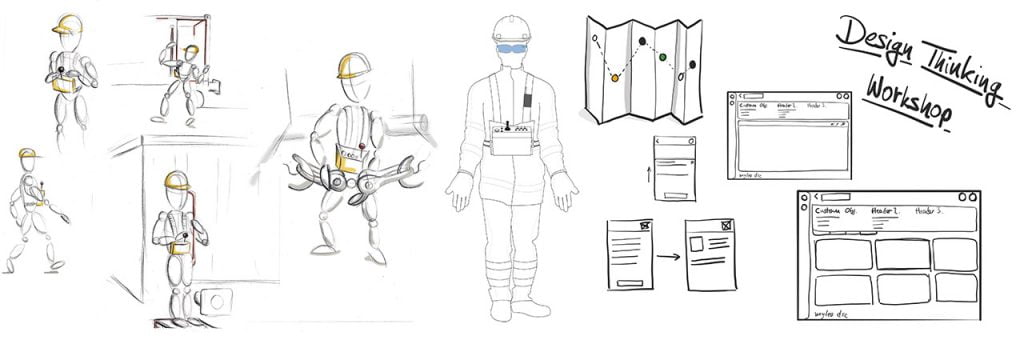From working student to UI/UX designer
At leogistics, we take all the impulses that our employees bring with them from their previous positions seriously – because there is a lot of potential for innovation in them. No matter in which position new colleagues start: Whether as an associate straight out of university or as an experienced senior, everyone quickly takes on their own topic and project responsibility, can play an active role in shaping the future of logistics – and can develop personally in a wide variety of directions. We are delighted with the diverse ideas that our team, which now numbers around 140 and has a wide range of experience, develops anew every day. Hardly anyone embodies this as much as Jonas Falkenberg, Lead UI/UX & Interaction Design. In this interview, he talks about his extraordinary career at leogistics GmbH.
1. Hi Jonas, tell us how did you end up at leogistics?
Looking back, it’s actually quite a funny story. At the end of 2011, I did my community service in the Department of Pneumology at the University Hospital Eppendorf (UKE) in Hamburg. After work, from 6 p.m. to 10 p.m., I took a portfolio preparation course for my industrial design studies, where I worked on a wide variety of drawing techniques. At the clinic, I overheard that the husband of a colleague was looking for a graphic designer – and that was André’s wife (André Käber, CEO leogistics GmbH)!
It was important to me to earn money alongside my studies after my civilian service, and that’s how I had my first conversations with leogistics. I thought it was great that they always took place on an equal footing, even though I was “only” a student or civil service employee! This has remained the case to this day. Frank (Würschnitzer, Development Architect at leogistics GmbH) played an important role in these discussions. He immediately gave me a good feeling and has remained my mentor to this day. It’s important to know that every leogistics employee has a mentor in addition to the technical team leader, who can be approached at any time.
At that time, we sat in a very small office with just 25 people – me as a student trainee – and I designed graphics for our leogistics Rail solution, for example, in parallel with my studies. There was no marketing department like there is today, we just did everything ourselves. One of my first jobs was to present the dock/door appointment scheduling system leogistics Slot as a 3D animation. That was something completely new; today, of course, something like that is standard.
2. Now you're not just a graphic designer. How has your role evolved?
One focus of my industrial design bachelor’s degree was the topic of user interface, and so at leogistics I also dealt less and less with advertising and more and more with UI. A highlight was my first design for a BASF container terminal for reach stackers, where container booking is not only easier but also more fun based on gamification. The design is still in use today!
In this context, I was able to apply the approaches of user-centricity and design thinking from my studies to a real customer project for the first time, i.e.: How can one approach the question of what the users of a software solution really need and want?
Also during my studies, I developed the first yard visualizer in Adobe Flex together with Frank, which depicts yard logistic processes on a map of the plant premises. In the meantime, there were more software developers at leogistics, with whom I then dived into the world of SAP FIORI apps.
I wrote my bachelor’s thesis in industrial design in the field of user interface design. The title was “User Interfaces in the Automotive Sector – Intuitive Handling of Infotainment Systems”. Originally, I wanted to work in the automotive industry. But in the course of time, the desire solidified in me that I would rather design complete products instead of just a small part, such as a wing mirror, which is the case with many jobs in the automotive industry. For me, user interface design is clearly the future.

Finally, I wrote my master’s thesis in the field of interaction design (human-computer interaction) about mobile devices in logistics, with a focus on plant railroads at leogistics. And that was the end of my six-year career as an “eternal working student” (laughs). By the way, I still credit leogistics to this day for not only providing me with great support during my thesis, but also for making me an offer of permanent employment at this stage.
I think that’s how the relationship between employer and employee should be: The company supported me in my studies and during my graduation – now I’m pushing the topics of user interface/user experience design, user-centeredness and design thinking for leogistics. In the end, everyone benefits, even our customers – namely from better solutions.
3. The subject of railroads then occupied you in a completely different way, right?
Yes, from 2018 to 2020 I was also involved in logistics consulting, especially for rail freight transport and our leogistics Rail solution, and supported projects at VW and Evonik, among others. Due to my background, my focus was primarily on user training and support. That was fun, too (laughs), but my hobby was and is simply UI and UX design, which is why I gradually withdrew from the project business.
4. What is your role at leogistics today?
Community, I continue to develop the myleo / dsc product together with my team of four. For our logistics platform, I co-developed the user interface in the team and played a major role in shaping it.
Studying industrial design with a focus on UI and UX design was the best decision for me, because it gave me such a broad professional background and gave me insights into a wide range of design areas.
5. What else do you plan to do with the myleo / dsc?
In the future, myleo / dsc is to become much more customizable and even more responsive to the needs of users. Here, we are again relying a lot on methods from design thinking and would like to focus even more on user-centeredness.
In large implementation projects, we often talk to the logistics and IT managers, but often not to the end users. At leogistics, we take a different approach and involve the people who have to work with the software every day. This allows us to develop better software and at the same time create greater acceptance of the new solutions.

We are also currently in the process of further developing the leogistics consulting portfolio and making it even broader. In the future, for example, we could also offer design thinking workshops as a sales package.
To sum up, there are four areas where I’ve had my fingers in the pie at leogistics: marketing, user interface design, logistics consulting for Rail, and today interaction design for myleo / dsc. I think that shows quite well the diversity and flexibility of the areas of responsibility at leogistics – and how you can develop here.



